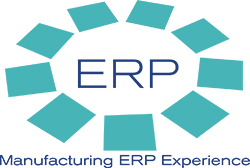A 20/20 View of the ERP Industry—Nine Trends to Watch
April 1, 2015Comments
Among the things you should look for: integration of mobile computing and ERP software, and an emphasis on organizational change management to streamline implementations, and help remove some of the pain.
 Each year we make predictions for the ERP software industry. Sometimes we get it right, and sometimes we’re off base. It’s clearly not easy to predict the future in any industry, especially one as dynamic as the enterprise software industry.
Each year we make predictions for the ERP software industry. Sometimes we get it right, and sometimes we’re off base. It’s clearly not easy to predict the future in any industry, especially one as dynamic as the enterprise software industry.
Over the years we have implemented and studied thousands of ERP implementations to crack the code on what it takes to achieve ERP success. We have found distinct differences between implementations that succeed and those that fail. Through our experience and research, we have identified trends and best practices that will help increase the success rate of ERP implementations.
1) Increased consumerization of ERP systems. As new generations of employees enter the workforce, we likely will see more consumerization of ERP systems to accommodate these new workers. Suppliers will be under increased pressure to develop systems with user-friendly and intuitive software solutions that more closely resemble consumer technologies.
2) Mobility will become even more mainstream. Many industry analysts like to talk about SaaS and the cloud, both of which will likely continue to see increased adoption in coming years. But, mobility will be the primary technological reality by the year 2020. Management, back-office employees, shop-floor workers, warehouse clerks and others within most enterprises will use mobile devices to access enterprise data. A contributor to this trend will be the increased use of mobile devices in our personal lives. The other reason reflects where the workforce is headed: more part-time, mobile and contract employees will further necessitate the need for mobile ERP software.
 3) Increased focus on business intelligence (BI), data and analytics. This trend already is gaining momentum, but the BI movement will continue to accelerate in coming years. After years of capturing reams of transactional and strategic data throughout their enterprises via ERP software, organizations have pivoted their focus toward making sense of this data and turning it into a strategic advantage. Simple reporting won’t cut it—enterprises will demand more robust and intelligent ways to use this information.
3) Increased focus on business intelligence (BI), data and analytics. This trend already is gaining momentum, but the BI movement will continue to accelerate in coming years. After years of capturing reams of transactional and strategic data throughout their enterprises via ERP software, organizations have pivoted their focus toward making sense of this data and turning it into a strategic advantage. Simple reporting won’t cut it—enterprises will demand more robust and intelligent ways to use this information.
4) Increasing fragmentation of ERP software. We already see an uptick in the number of clients that are not necessarily looking for full-blown ERP software, but instead seek to pick the proverbial low-hanging fruit associated with point solutions—warehouse-management systems (WMS), customer-relationship management (CRM) systems and/or human capital management (HCM) systems, for example. Part of this is due to a tendency for the organizational pendulum to naturally swing back and forth between single ERP software systems and multiple-point solutions. Implementing a WMS, CRM or HCM system can be a lower-cost, lower-risk venture, while delivering business benefits in a shorter timeframe than with a full ERP system.
5) Organizations will finally crack the code on organizational change management. Ever since we began publishing our annual ERP report back in 2007, organizational change management has been one of the biggest challenges identified by companies across the globe that had recently implemented new ERP systems. However, our 2014 ERP Report was the first where organizational change management and training issues were identified as the hands-down top reason ERP projects were delayed or exceeded budget. This suggests a trend toward a focus on these important issues. To further add credibility to this argument, consider that at some point, ERP systems will reach a point of diminishing return in terms of technological bells and whistles. Then, “softer” issues such as organizational change management will become the primary differentiators between companies that succeed in their ERP implementations and those that fail.
6) Flexible deployment options from ERP vendors. Although SaaS and cloud solutions may take the cake for “most industry hype,” the real winners will be vendors who provide multiple options for different modules, business functions or points in time. SaaS and cloud systems have increased their market share in recent years, but the real trend is toward hybrid options and flexibility to accommodate the rapidly changing nature of most organizations. For example, some companies want to know that they can buy an on-premise solution today, bolt on a SaaS option for certain parts of the company as it grows and move everything back to on-premise later if they wish.
7) The return of best-of-breed and two-tier solutions. There was a time when IT environments with more than one ERP system were considered bad practice. While that still may be the case for many organizations, forward-thinking CIOs and CFOs recognize that a best-of-breed or two-tier strategy isn’t necessarily a disadvantage. For example, an organization may find that it wants a Tier I solution like SAP or Oracle for its back-office financials and inventory management, but would prefer more specialized packages from vendors such as Infor, Epicor or IFS for more niche functions, such as manufacturing, warehouse management and demand planning.
8) The rise of independent ERP consultants and the “single throat to choke” consulting model. Forward-thinking organizations will use independent consultants not only to evaluate and select potential ERP systems, but also to help implement solutions, manage organizational change, reengineer business processes, provide functional and technical experts in an organization’s chosen software, and provide quality assurance and oversight of system integrators.
9) ERP consultants will be required to be certified in tested and proven methodologies and toolsets. Gone are the days of gun-slinging consultants powering their way through ERP implementations with whatever tools that came to mind. Instead, organizations are recognizing the need for consultants trained in specific methodologies and toolsets that have been proven and tested over time. Organizations that demand this more innovative and effective approach will ensure that they are not leaving their ERP implementation outcomes to chance. MF
See also: Panorama Consulting Solutions
Technologies: Management









